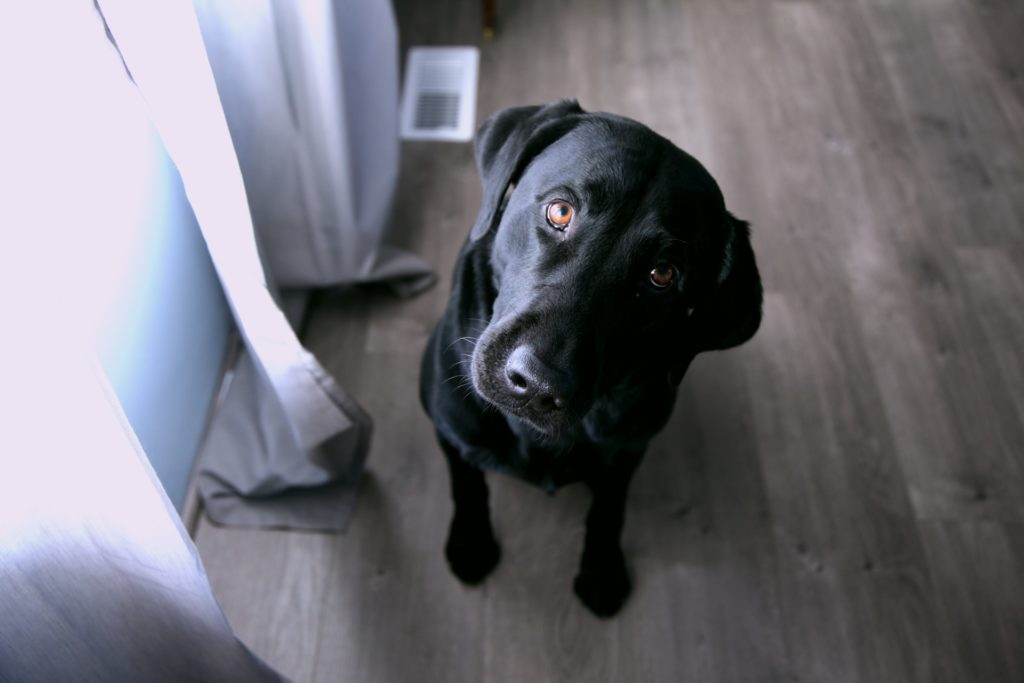4 Social Cues for Reading Your Dog’s Body Language
Unfortunately, your dog can’t talk to you. Without verbal communication, we have to rely on our pets’ body language for hints as to what they’re feeling at any given time. You probably have a pretty good idea of the things your dog does to communicate joy. But do you know what it looks like when your dog is stressed? Curious? Relaxed? We dove into some common gestures your dog may make and what they mean, so you can better understand your pup.

Relaxation
Who doesn’t want a relaxed dog? A calm dog won’t eat your furniture or bark and whine while you go about your business. We should all strive to provide a stress-free environment for our dogs. Here’s what that looks like: A relaxed dog is fluid and confident in their movements. Their ears will be floppy rather than pointed. They may lean into you. You might notice that their tongue lolls to one side, they may give you a play bow, or they may have a wiggling backside. Their eyes may be squinted. If your dog rolls over and exposes their belly for a belly rub, that’s the sign of ultimate trust and shows your dog is content with you. Also look for a “helicopter tail”, or tail moving fast from side to side. However, you should be aware that a low, slow-wagging tail is often a sign of fear or nervousness.
Curiosity
Curiosity isn’t just for cats. Dogs are naturally curious animals and love to investigate. The more dogs are socialized to external stimuli, the less likely they are to be overly reactive to various sights or sounds. If your dog hears an odd noise or anticipates a treat or play, they may exhibit these traits. A curious dog will shrug their ears upward in attention. They may tilt their head to the left or right (sometimes even alternating). You may even see them lift a front paw in anticipation. Curious dogs will be close-mouthed, waiting for the next step, rather than the open-mouthed expression of a relaxed dog.
Nervousness
A dog’s stress signals are the most commonly misinterpreted types of body language your furry friend will exhibit. This is because they aren’t as obvious as expressions of joy or contentment. Some of the things they do would indicate another behavior in the human world. For example, a stressed or nervous dog may yawn or lick their lips compulsively. This doesn’t necessarily mean they’re exhausted or hungry. They may drool. You might see the whites of their eyes more, also known as “whale eye”, when they look away from the direction they’re facing. More obvious signals such as a low-hanging tail, tense expression, and raised shackles may also be present.
Differences
Submission is an important line of communication in the dog world. A dog may show deference to a perceived threat as a way of avoiding injury and showing they mean no harm. If your dog is well-socialized, they’ll use this as a sign to back off or play more gently. A dog trying to communicate deference may avert their eyes, tuck their tail, or flop onto their side to show their belly. This type of belly flop is not meant to invite belly rubs, but rather communicate with the other dog or human that they don’t want participate in a given behavior. Understanding these social cues will give you better access to your dog’s mood and needs. As said, your dog doesn’t have the luxury of using words to communicate (although plenty use their voices by way of barks, growls, or howling!). If you can read their body language, you can remove negative stimuli from their environment and create a happier, healthier pup. Just like a good play or obedience session, this will strengthen the bond between the two of you. Learn more from our experienced dog trainers about these kind of dog body languages, feel free to check our pricing guide for dog training.